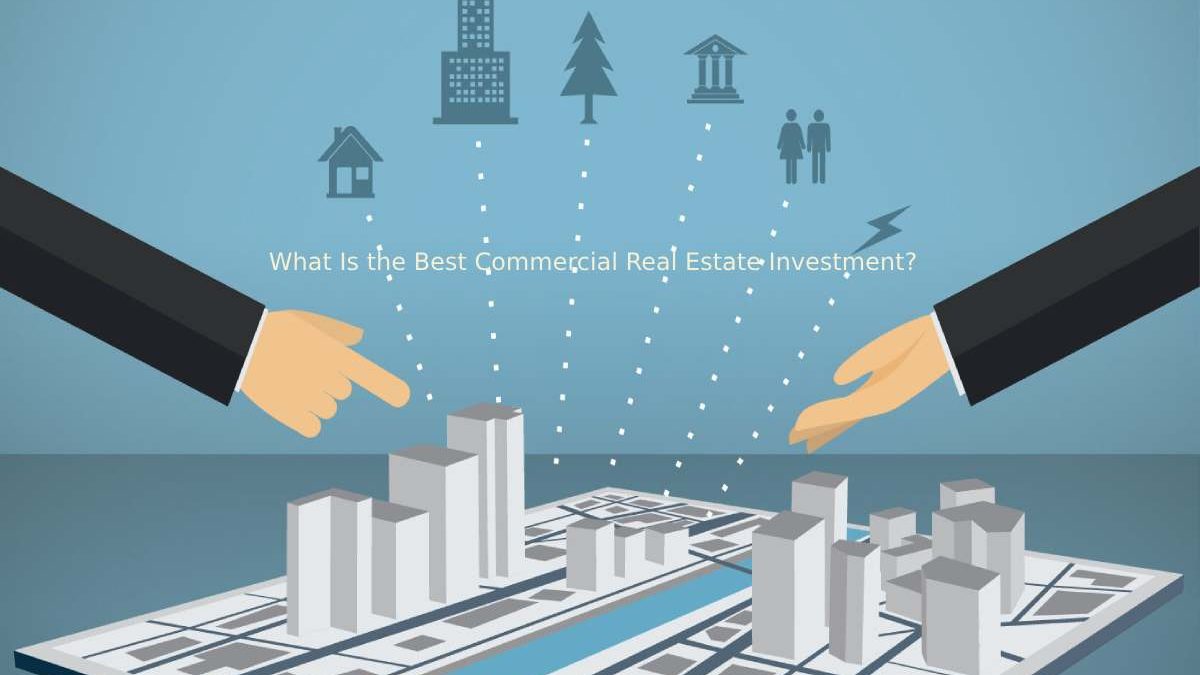Table of Contents
4 Commercial Real Estate Investments
While residential real estate typically comes to mind when many hear “real estate investing,” commercial real estate is where many can find unique investment prospects. But which one is the best for your circumstances?
Commercial real estate includes offices, retail locations, warehouses, and apartment or housing complexes with five or more units. Earning income in commercial real estate typically involves renting out these spaces to businesses, which can have advantages like longer leases, higher rental returns, and greater value appreciation than residential property. However, this sector ordinarily requires larger upfront investments, entails more intricate management tasks, and tends to be more vulnerable to economic shifts.
Types of Commercial Real Estate Investments
Before investing in commercial real estate, Knowing the various kinds of commercial real estate is crucial. Typically, commercial real estate is broken down into four categories:
- Office
- Industrial
- Multifamily rental
- Retail
You can break down each category further. For example, retail includes stand-alone stores, strip malls, restaurants, big-box stores, fitness facilities, family entertainment centers, regional malls, and large shopping complexes.
1 – Office
Office real estate is largely self-explanatory. They include high-rises downtown, midrise buildings in suburban areas, medical offices, and single-tenant office buildings. Offices may be used for specialized purposes, such as a small laboratory, a remote distribution facility, or a dentist’s office.
The office real estate market has undergone a massive shift since the COVID-19 pandemic. The rise of remote work has led to major vacancies and declines in the value of office leases.
2 – Industrial
Buildings and properties are referred to as industrial real estate. that are used for manufacturing, larger shipping facilities, or logistics. For example, warehouses, factories, and locations used for assembly would all qualify as industrial real estate.
A benefit of industrial real estate is that leases tend to be long-term and steady, making them more predictable for investors. However, many industrial properties need to be customized for specific uses. If a firm ends its lease, the property may need major updates to attract new tenants. The properties are also typically large and reliant on a single occupant, making it harder to diversify among multiple tenants.
3 – Multifamily Rental
Multifamily rental properties are apartment buildings, town houses, and multi-unit properties like high-rises in urban areas. They are where people live for the long term (they count as residential only if there are four or fewer units), so they also include condominiums and mobile home parks. Multifamily homes, including duplexes, triplexes, and quadplexes, may be included in this type of property, though many lenders allow typical residential mortgages to purchase smaller multifamily homes.
4 – Retail
Retail properties are those used by companies that sell goods or services to consumers from a physical location. Retail includes supermarket shopping centers, strip malls, community centers, big-box locations, regional malls, restaurants, athletic clubs, and family entertainment centers.
According to the NCREIF Property Index, this has been a top-performing segment of the commercial real estate market, falling just 1.39% compared with an overall fall of 8.39% for commercial real estate from Q4 2022 to Q3 2023.
Tips for Successful Commercial Real Estate Investing
Tips for success in commercial real e Advice for thriving in the commercial real estate market state investing would include, first, seeking out diversification. If you only own a single property with a single tenant, you are relying entirely on that property and tenant for success. You could face financial setbacks if the building loses value or the tenant stops paying.
Diversifying, by either investing in several properties or buying one with multiple tenants, would reduce risk. You can also diversify by looking at other kinds of real estate investments, such as commercial REITs, or real estate investment trusts, are traded similarly to stocks. but must provide 90% of their taxable income in dividends annually.
The Bottom Line
Shopping centers and office buildings are examples of commercial real estate. And apartment complexes. Like all real estate, it’s important to consider location and market trends before investing. Do your due diligence, have a plan for handling a downturn, and finally, if need be, make sure your investment is in line with your financial objectives. and speak with a financial advisor before traversing further into this landscape.

